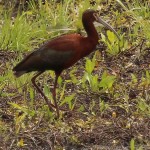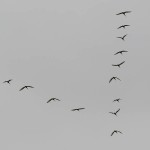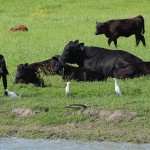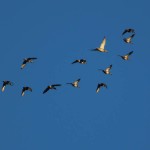I want to apologize in advance for the quality of the following pictures. This is what happens when you see a bird in winter that you don’t expect to see, and you know you need to take a few pictures, but you don’t have your camera ready to go! Got all that?
The birds in these pictures are White Ibises. They were photographed at the John Bunker Sands Wetland Center in Seagoville, Texas. I have usually only seen these birds at the height of summer, and when this flock of a dozen or so ibises flew over my position on the morning of January18, 2014 they caught me completely off guard! Because of this my pictures are largely out of focus and have exposure issues.
I found the group of ibises again a little later in the day, and this time it was distance and afternoon backlighting that diminished the photographs. It just wasn’t my day!
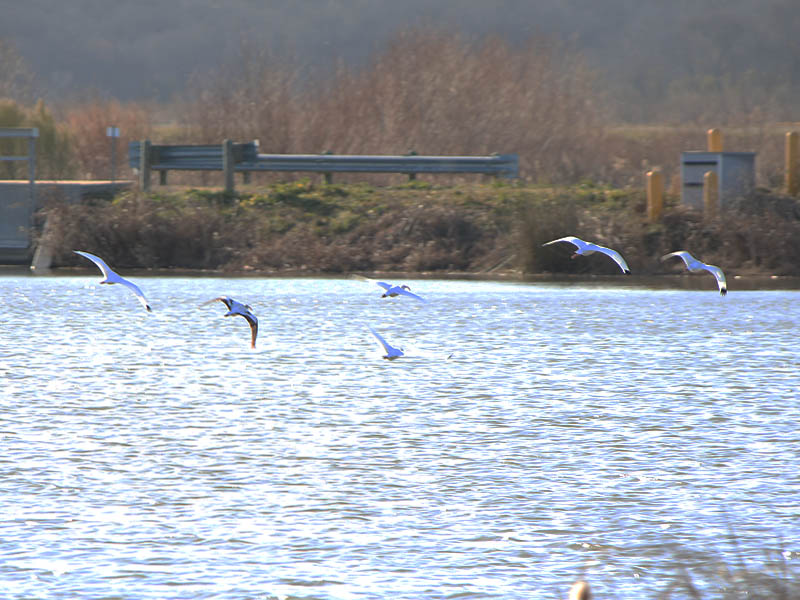
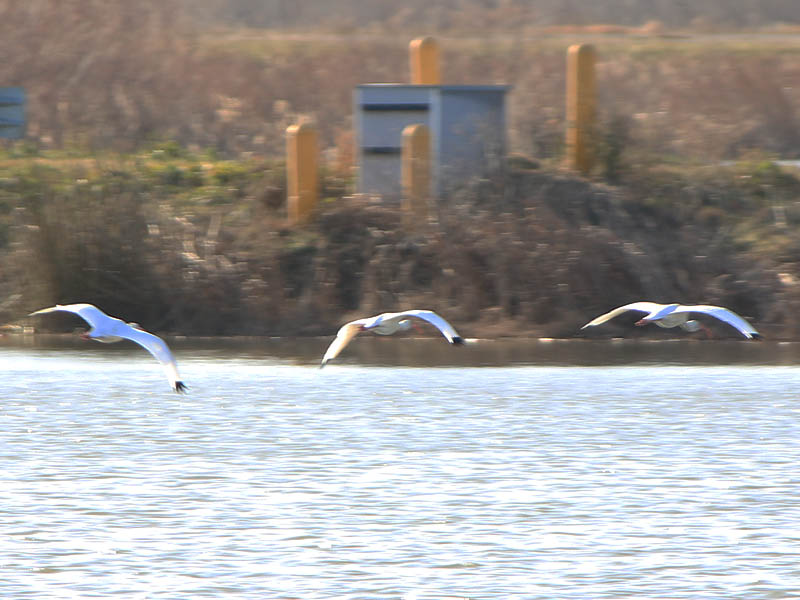
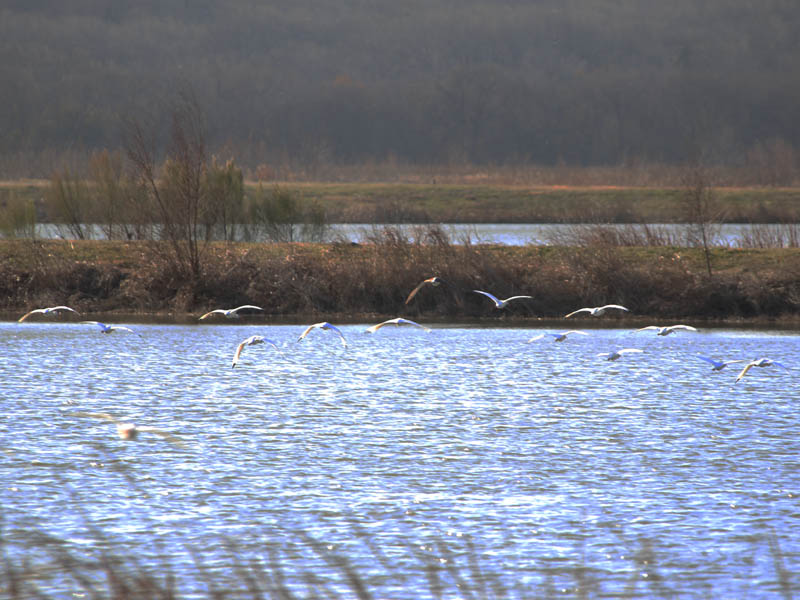
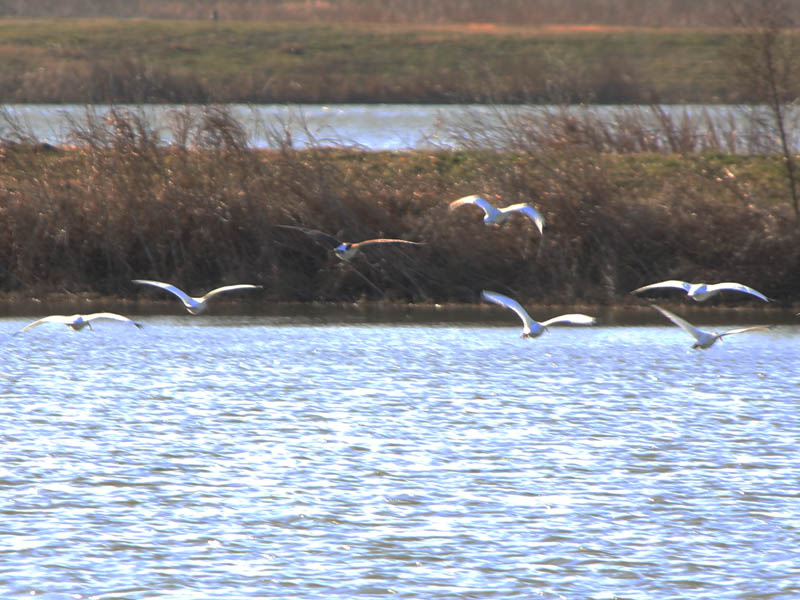
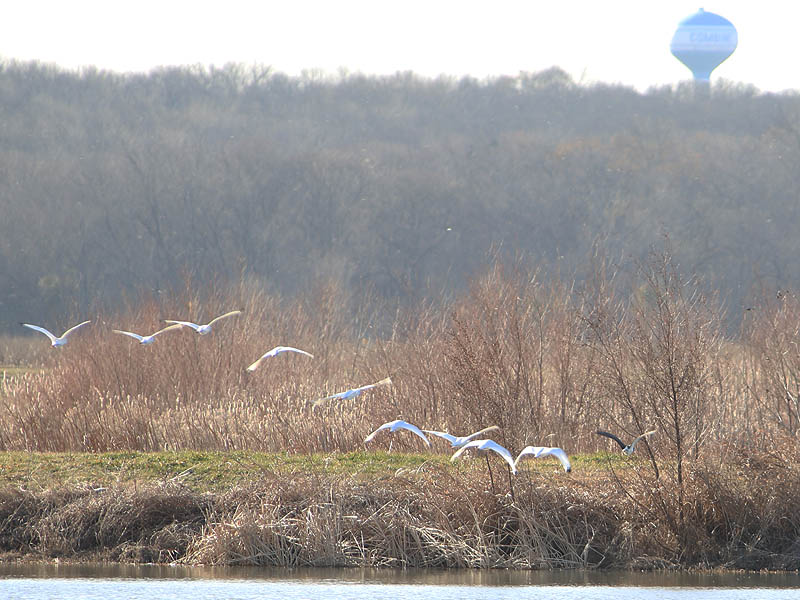

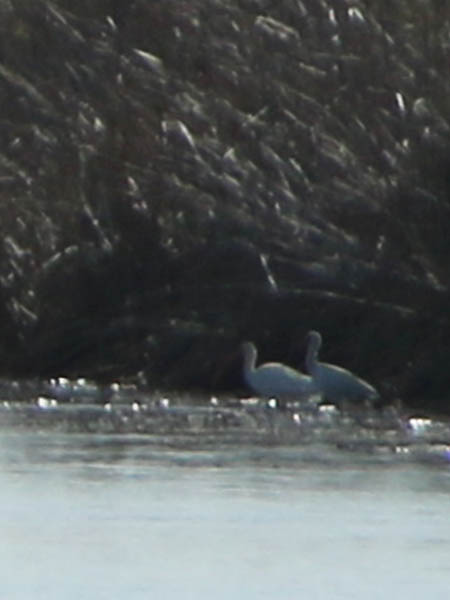


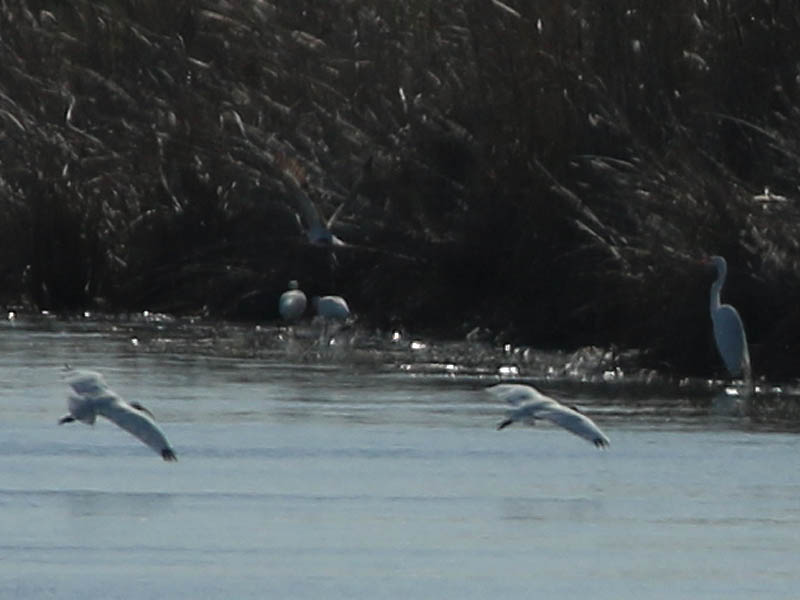
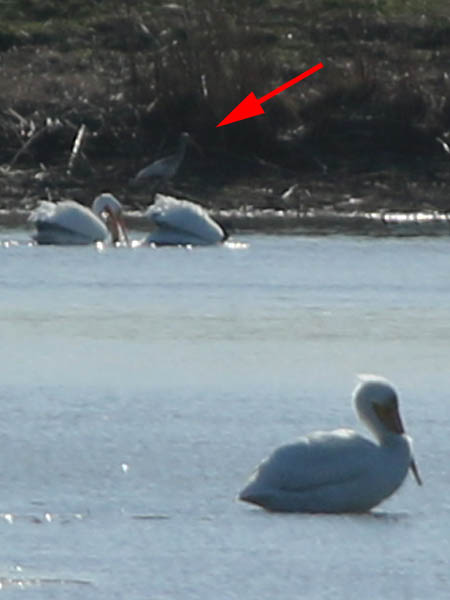
As it turns out, it has already been well established that we have a resident population of White Ibises here in North Texas. eBird.org has records of wintertime sightings at John Bunkers Sands Wetland going back a number of years.
White Ibises have also been documented breeding in the DFW area for sometime now. Last summer I followed the nesting activities of several mated pairs at the University of Texas Southwestern Medical Center rookery near downtown Dallas. You can read about that observation here: White Ibis – UTSWMC Nest Update.
Wikipedia has this to say about the White Ibis.
The American White Ibis (Eudocimus albus) is a species of bird in the ibis family Threskiornithidae. It is found from the mid-Atlantic and Gulf Coast of the United States south through most of the New World tropics.[2] This particular ibis is a medium-sized bird with an overall white plumage, bright red-orange down-curved bill and long legs, and black wing tips that are usually only visible in flight. Males are larger and have longer bills than females. The breeding range runs along the Gulf and Atlantic Coast, and the coasts of Mexico and Central America. Outside the breeding period, the range extends further inland in North America and also includes the Caribbean. It is also found along the northwestern South American coastline in Colombia and Venezuela. Populations in central Venezuela overlap and interbreed with the Scarlet Ibis. The two have been classified by some authorities as a single species.
Their diet consists primarily of small aquatic prey, such as insects and small fishes. Crayfish are its preferred food in most regions; however, it can adjust its diet according to the habitat and prey abundance. It is a tactile, non-visual forager, whose main foraging behavior is probing with its beak at the bottom of shallow water to feel form, and to capture its prey.
During the breeding season, the American White Ibis gathers in huge colonies near water. Pairs are predominantly monogamous and both parents care for the young, although males tend to engage in extra-pair copulation with other females to increase their reproductive success. Males have also been found to pirate food from unmated females and juveniles during the breeding season.
Now that I know we have a year round population of these birds near the metroplex I might make it a point to try for some better wintertime images. How unique and special would photographs of ibises in the snow be!?!


